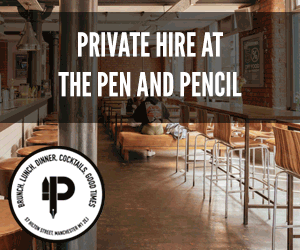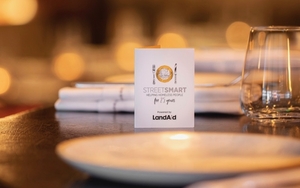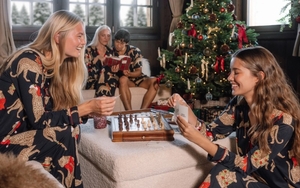Harley Young and Stanley Chow talk artistic inspirations and his most popular portraits
Internationally renowned Manchester artist and illustrator, Stanley Chow, has been chosen to design The Bruntwood Prize for Playwriting’s brand-new logo, celebrating 20 years of Europe’s biggest playwriting competition.
Born out of Manchester, The Bruntwood Prize for Playwriting gives writers of any background and experience an equal opportunity to enter their original work for the chance to win a prize fund which can help accelerate their career.
Known for his characterful geometric portraits, Stanley Chow’s work has become instantly recognisable and led him to work with a wide range of clients, including EMPIRE and The New Yorker. He also received a Grammy nomination for his work on The White Stripes’ Icky Thump.
I caught up with Stanley to discuss his artistic journey, the process of designing the Prize’s new logo, and how he tied it all together with his deep connection to Manchester.
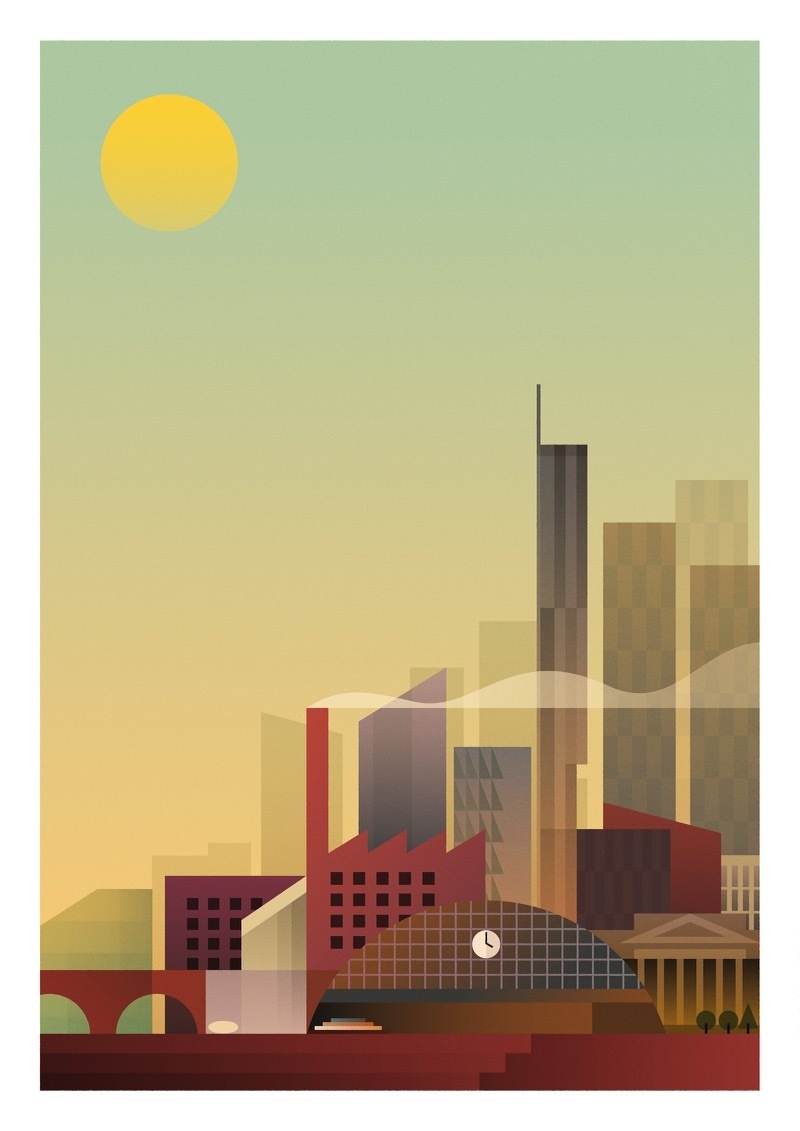
Stanley, how did you get into art?
I knew from the age of five that I was going to be an artist. I was drawing as soon as I could hold a pen. I was always good at art and I felt a bit like going through school was something that kind of got in the way.
It was something that I had to do, but it wasn’t going to change my path.
I think I was influenced by my uncle really, and my dad. I think they had slightly artistic genes even though they didn’t really show it. My dad used to be a trainee tailor before he opened his chip shop. He had a certain amount of creativity, I remember copying things my uncle and dad would draw when I was a really young kid. They’d draw a fish and I’d copy the fish, I remember that quite vividly.
But then I worked my way through school, did an Art A-Level, an Art Foundation, then an Illustration HND down in Swindon.
I applied for loads of the big universities - didn’t get into any of them. Decided ‘Okay, if I want a flourishing career in this I need to be near London.’ but even getting there from Swindon became too expensive so I came back up to Manchester and started working back at my parents’ fish and chip shop.
By this time, I’d found an agent in Manchester called the Northern Art Collection who really helped my career take off.
Stanley Chow pieces are instantly recognisable. How did you find your art style?
I’d say my style came to me around 2005/2006. I was disillusioned with a few things, disillusioned with the art I was doing already.
I ended up working for lots of fashion and style magazines. Initially, I wanted to be a fashion illustrator but when I started getting work it wasn’t the type of fashion I wanted. It was too broad fashion.
I suppose I wanted my work to be more couture but I was doing a lot of stuff I didn’t want to do like yoga pose illustrations and people in bars having drinks. I wanted my work to be more iconic as opposed to practical, you know?
That’s when I thought ‘Right, I’ve got to stop doing this work and focus on what I really want to do.’ which was portraits.
But I couldn’t just do portraits - I needed to make them stand out a bit. I love geometric art so that combined two of my passions; my love for geometric art and my love for portraits, but I couldn’t do the stuff I wanted to with paintbrushes and pens. I had to learn how to use a computer to realise what was in my imagination.
Nowadays, computers are something we use every day but, back then, it wasn’t something you could easily get a hold of. I didn’t really have the money back then, but I eventually got a computer and things flourished.
Would you say that the computer technology we have nowadays has given you more artistic freedom or sort of taken that away?
I don’t use the computer any differently to how I used it at the beginning.
I found my style on Adobe Illustrator 20 years ago and I basically do the exact same things now. Even all the newfangled things and updates they add onto the software every year, I don’t need them. It’s become too complicated.
Discovering [Adobe Illustrator] the first time round was like discovering a HB pencil and using that same pencil every time.
I wish I could just go back to the original version because I’m still pretty much working the same way.
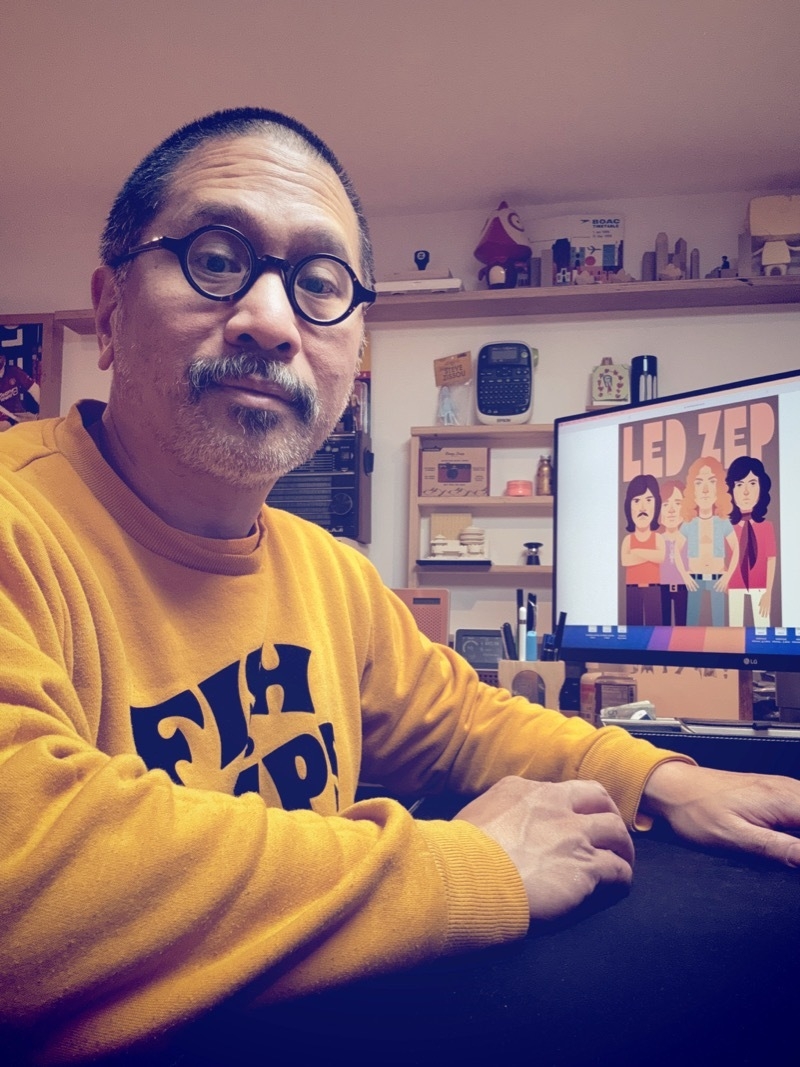
Do you have a favourite type of person to illustrate? Actors, musicians, etcetera?
I just like illustrating people who I like. My interests lie in music, film, football and food so I’m often illustrating a lot of chefs.
It’s something I’ve always encouraged people to do when they’ve asked me for advice on how to start. Illustrate things that interest you.
When I’m not illustrating I’m DJing. Music is a massive part of my life and career, so I’m naturally inclined to illustrate musicians and pop stars. When I’m not doing that, I’m watching films or telly, so I’m just illustrating things that I’m generally interested in.
Which portraits of yours are the most popular amongst your fans?
I did one of Marcus Rashford doing his famous goal celebration and that sold like hotcakes. Especially the season when he scored 30-odd goals. Every time he scored a goal sales would soar. I was like ‘Ok, cool. Score more goals please!’
The Man United portraits always do well. My Sir Alex Ferguson portrait is a best seller too. I did that as a collaboration with Tony Walsh, the poet. He wrote the poem and I illustrated it on the same print. And, of course, Noel Gallagher and Liam Gallagher are big sellers. Ironically though, I thought sales would go crazy when the tickets were announced but then I realised everyone spent all their money on tickets and were unable to afford more prints.

You’ve been asked to design this year’s Bruntwood Prize for Playwriting logo, celebrating 20 years of the awards. Talk us through the design.
I had an exhibition at The Edge Theatre in Chorlton. Paula who works at the Royal Exchange Theatre is a patron at The Edge and when The Bruntwood Prize team were thinking about who to choose to design the logo they wanted a Mancunian involved.
In terms of the design, because it’s The Bruntwood Prize, they wanted something to do with Bruntwood incorporated into the logo but something to represent the Royal Exchange Theatre as well. They also wanted it to feel very Mancunian as well and celebrate the 20 years. So when you examine the logo, there’s four different elements in it that make up the brief.
Originally they wanted a bee to represent Manchester, but everyone does a bee, so I thought ‘Okay, we can make the logo yellow and black with stripes all the way through’ which brought that element in.
Then I looked at theatre iconography and realised it's a lot of the same; some kind of quill or Shakespeare-inspired. I thought ‘No, I’ve got to get away from that’ so spent the day in the Royal Exchange to draw some inspiration and noticed that the stage has seven sides. I realised that was an element I could bring into the logo so if you look at the ‘0’ it follows that shape.
And then in the background there’s the towers which represent the skyline and again Bruntwood as they’re known for their buildings around Manchester.
Then I just tried to tie it all together and make it look nice. That was the hardest thing I’ve had to do because I was like ‘How do I bring all these different things together?’
I normally focus on one thing, you see, so to focus on all four things and make them equally important as one another was tricky.
Why do you think awards like the Bruntwood Prize for Playwriting are so important to the arts?
It highlights what people can achieve - otherwise, without these awards, you don’t hear about it.
It’s great for the person who wins of course, as it elevates them and their work to a higher status. But also, for the people who are looking for such a propellant, it becomes a focal point for them to go ‘Okay, they’re really good. So let's see what other talents and opportunities there are in the area.’
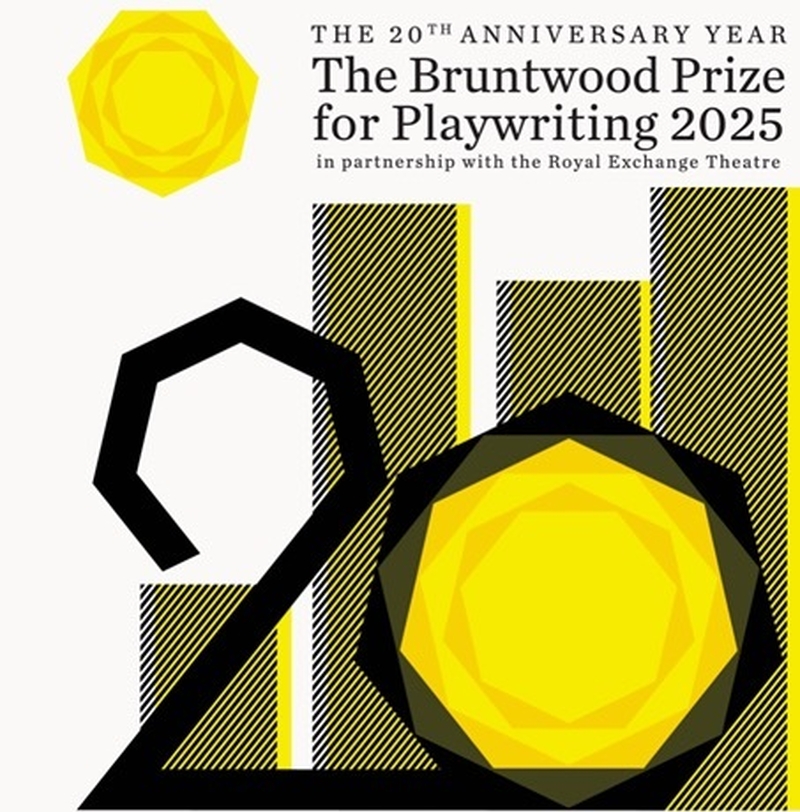
To celebrate the 20-year anniversary, the prize pot has increased in 2025 to £50,000, with the overall winner set to receive £20,000. Other awards include: the Judges Award of £10,000, the International Award of £10,000, and the North West Original New Voice Award of £10,000, which also includes a funded year-long residency at the Royal Exchange.
The longlist will be announced on 17 April 2025 and the shortlist in June, with the winning plays announced at the 2025 Awards Ceremony on 21 July in Manchester.
Keep up to date with developments at www.writeaplay.co.uk.
Get the latest news to your inbox
Get the latest food & drink news and exclusive offers by email by signing up to our mailing list. This is one of the ways that Confidentials remains free to our readers and by signing up you help support our high quality, impartial and knowledgable writers. Thank you!

Join our WhatsApp group
You can also get regular updates on news, exclusives and offers by joining the Manchester Confidential WhatsApp group.









